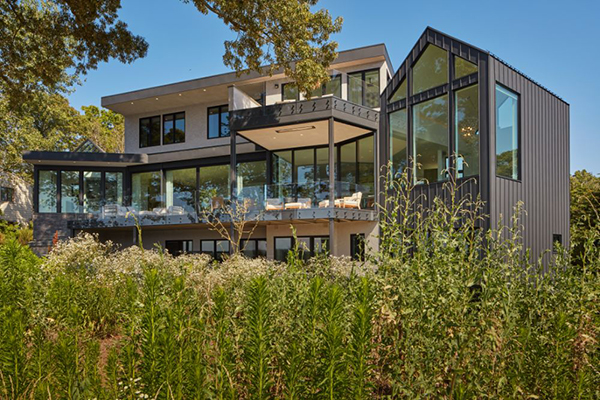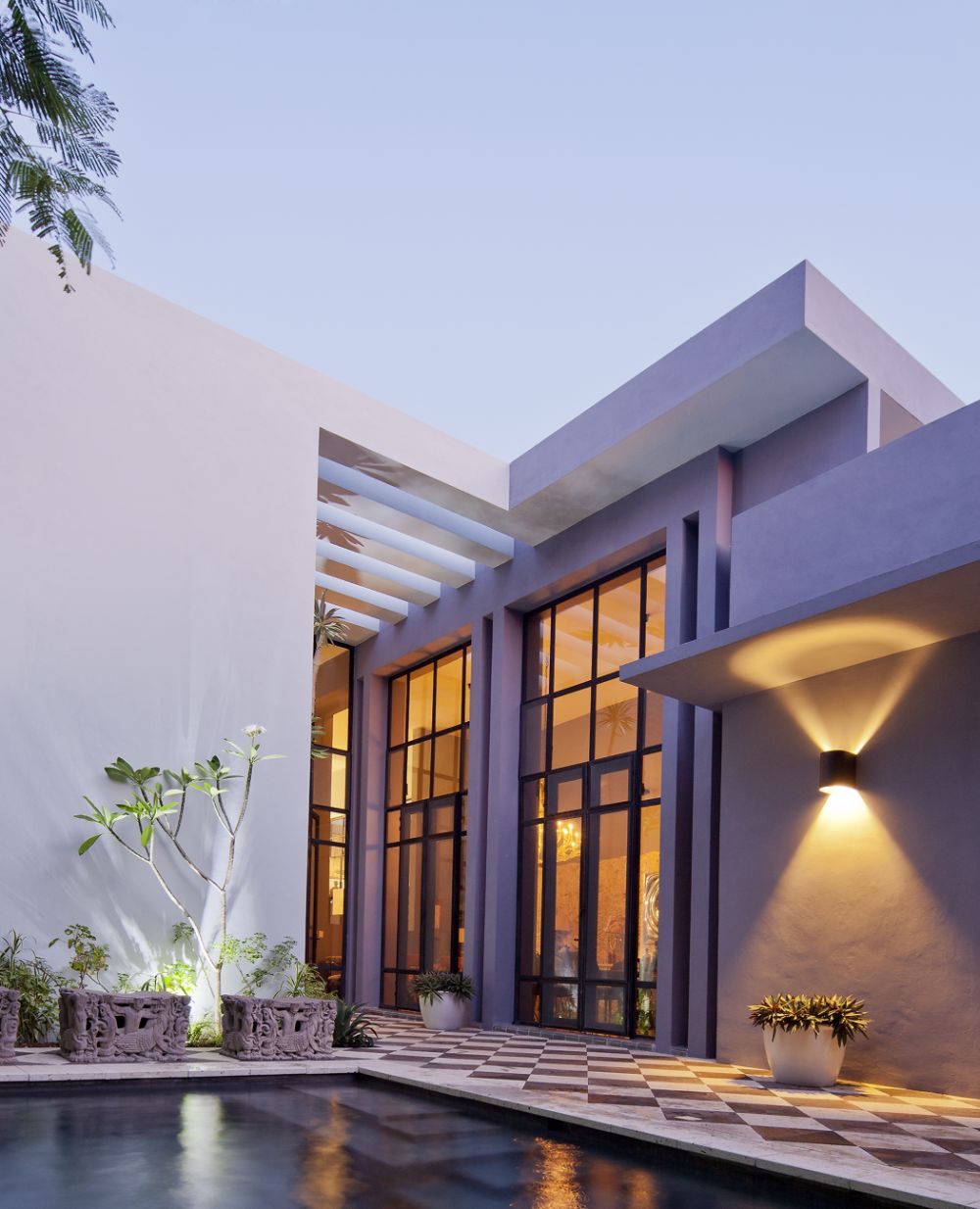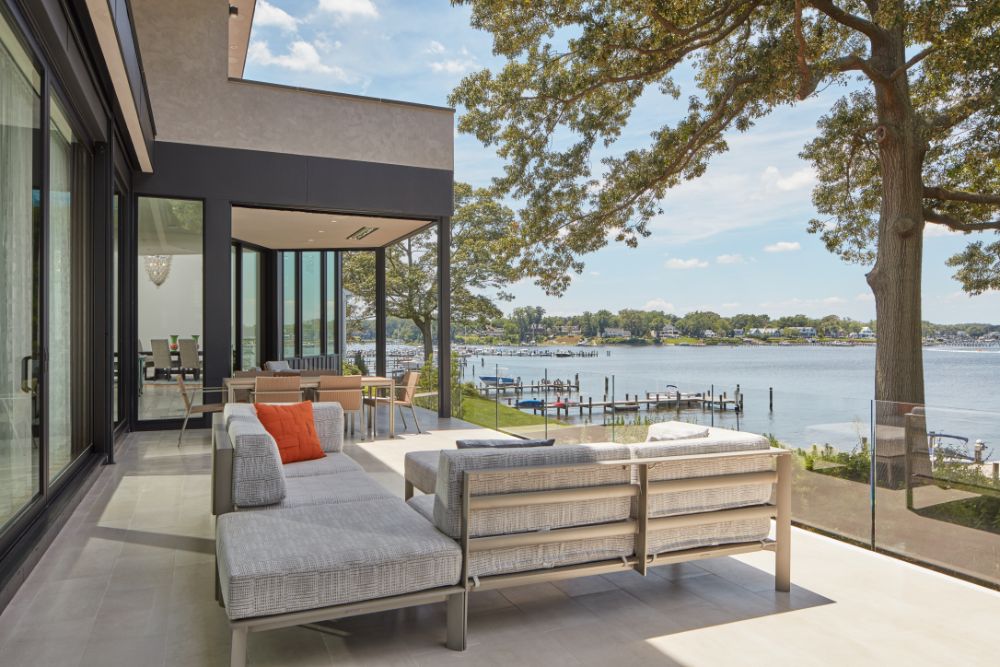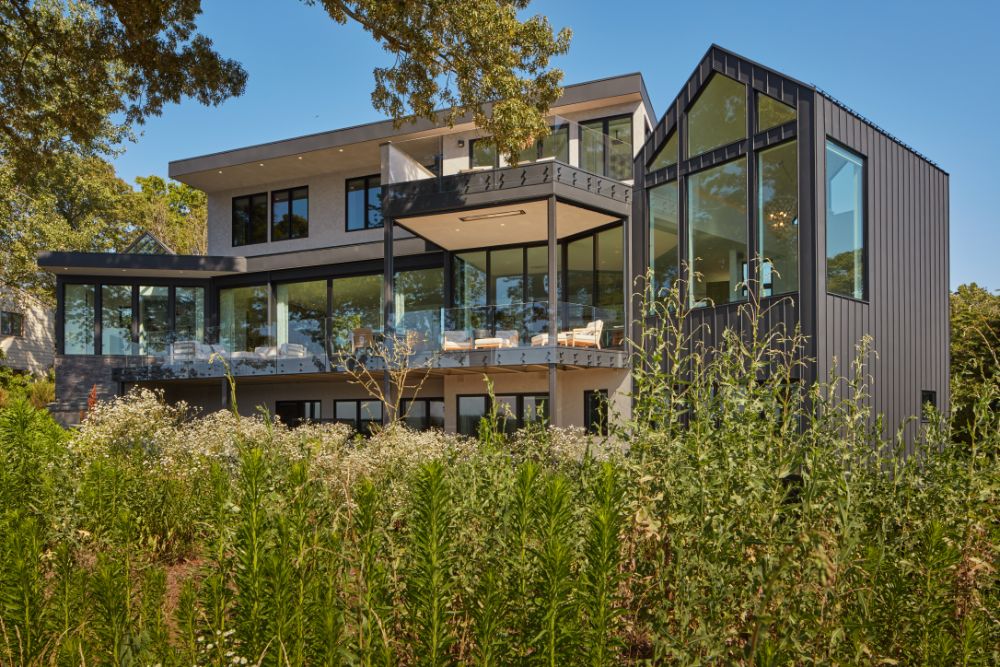Biophilic Design Principles & Wellness
What is Biophilic Design?
Biophilia- n. Love for the natural world felt universally by humans. Biophilic design is an intrinsic principle for Bohl – we have always given importance to it, and it’s evolved with our practice over time. The goal is to create a building in harmony with its environment and with varying degrees of actual inside to outside connection.
Benefits of Connecting the Interior to the Outside
As architects, we have the power to prevent illness and depression through designing meaningful spaces that are connected to nature, utilize low-toxic materials, and prioritize healthy air circulation. Incorporating biophilic design has been proven to make humans feel calmer, less stressed, more productive, and rested. Afterall, who doesn’t feel better after getting some fresh air or spending time in nature?
Although many humans want to be connected to the natural world, we have varying definitions as to what that entails. Some may want to rough it in the wilderness, while others may be looking for more of a glamping experience. No shame either way, but our designs do veer more toward that luxury glamping lifestyle…
Part of the Bohl design process is to identify where nature plays a part in your life so you can reap the wellness benefits of biophilic design.
Questions that Guide Biophilic Design
What is the climate of the site?
Understanding the climate is fundamental to creating a design that’s harmonious with its surroundings. The local climate can dictate materials used, architectural layout, and even the positioning of the structure. If a site experiences harsh winters or scorching summers, a design that responds to these conditions will not only be energy-efficient but will also enhance the comfort of its inhabitants. Climate-responsive design can also play a pivotal role in reducing a home’s carbon footprint.
What makes the site special?
Each site has its own unique charm and characteristics that differentiate it from others. It could be the subtle undulations in the terrain, the way sunlight filters through the canopy, or even the historical significance attached to it. By recognizing and celebrating these distinct features, we can craft designs that respect and amplify the inherent beauty of a location. In doing so, we embed a sense of place and belonging in our creations.
Does the site have special environmental features to be enhanced by our design – specimen trees, water features or views, native plants, cliff side, rock outcroppings, bucolic scenery?
These natural features aren’t just aesthetic assets; they’re touchpoints to nature that can deeply influence the experience of a space. Specimen trees could offer shade and become focal points in a garden; native plants can be woven into the landscape to foster local biodiversity. With the right design, a cliff-side view can become a living painting inside a room. Our goal is to ensure that the built environment seamlessly integrates and elevates these environmental features rather than overshadowing or compromising them.
How can we make the landscape better with the addition or renovation of a home?
The intervention of architecture should be a means to enrich the landscape, not detract from it. This might involve creating spaces that allow for more greenery, setting up rainwater harvesting systems to nourish the grounds, or even using materials that age gracefully with time and weather. A thoughtful renovation can enhance both the aesthetic and ecological value of a site, turning it into a thriving habitat for both humans and wildlife.
What challenges will we face when incorporating the project into the site?
Every site comes with its set of challenges, be it rocky terrain, high groundwater levels, or even local regulations. Anticipating these challenges allows us to craft innovative solutions that turn potential drawbacks into design opportunities. By collaborating closely with local craftsmen, environmentalists, and communities, we can glean insights and knowledge that aid in navigating these challenges while staying true to our design ethos.
Does the property have large temperature swings?
Large temperature variations not only impact the comfort of inhabitants but also dictate the choice of materials and construction techniques. For instance, a site with significant diurnal temperature shifts might benefit from high thermal mass materials like stone or brick, which can store heat during the day and release it at night. Designing for such conditions ensures that homes remain comfortable year-round while minimizing reliance on artificial heating or cooling.
Is there a proliferation of bugs?
In areas abundant with insects, considerations extend beyond mere comfort. While bugs play a critical role in local ecosystems, unchecked they can become nuisances or even health hazards in homes. Here, design solutions could range from integrating insect screens, choosing specific plants that deter pests, or even designing water features in a way that doesn’t encourage mosquito breeding. Striking a balance between welcoming nature and ensuring comfort is key.
Is it surrounded by urban concrete?
Urban settings, with their expanses of concrete, offer unique challenges and opportunities for biophilic design. While the immediate natural environment might seem limited, innovative solutions like vertical gardens, green roofs, or urban forests can reintroduce nature into the concrete jungle. The juxtaposition of greenery against urbanity can create striking visual contrasts while also offering pockets of respite and tranquility in the hustle and bustle of city life.
Bohl Architects Biophilic Design Case Studies
Merida Courtyard House
Living in a city can sometimes take us away from our nature, but this home in Downtown Merida does quite the opposite. Whether it’s the courtyard, the pool, or the roof, there is a place to experience the natural world.
Magothy Modern
A modern design that takes advantage of the natural light and the Magothy River views. The horizon line is apparent from nearly every room in the interior, while the outdoor patio provides rest and a complete connection to the surrounding landscape.
The Future of Biophilic Design with Bohl Architects
Our designs have always been more than just buildings; they are structures that breathe with their environment, fostering a symbiotic relationship between nature and humans. As we look ahead, Bohl remains committed to the principles and practices of biophilic design.
We have seen the profound impacts our biophilic designs have had on the wellness and well-being of our clients. With each project, we aim to push the boundaries of what’s possible, crafting homes that are not just sustainable, but are spaces that have soul and bring joy.
In the coming years, we’re excited to delve deeper into innovative methods, materials, and technologies that align with our biophilic ethos. Through architecture, we get to explore the myriad ways we can weave nature into our daily lives, and to discover the transformative power of design that truly resonates with our innate love for the natural world.
Want to Keep Reading?
Great Clients = Great Architectural Projects
October 18, 2023
Sustainable Architecture: Designing Green to Serve Many Generations
September 1, 2023
- 1
- 2








